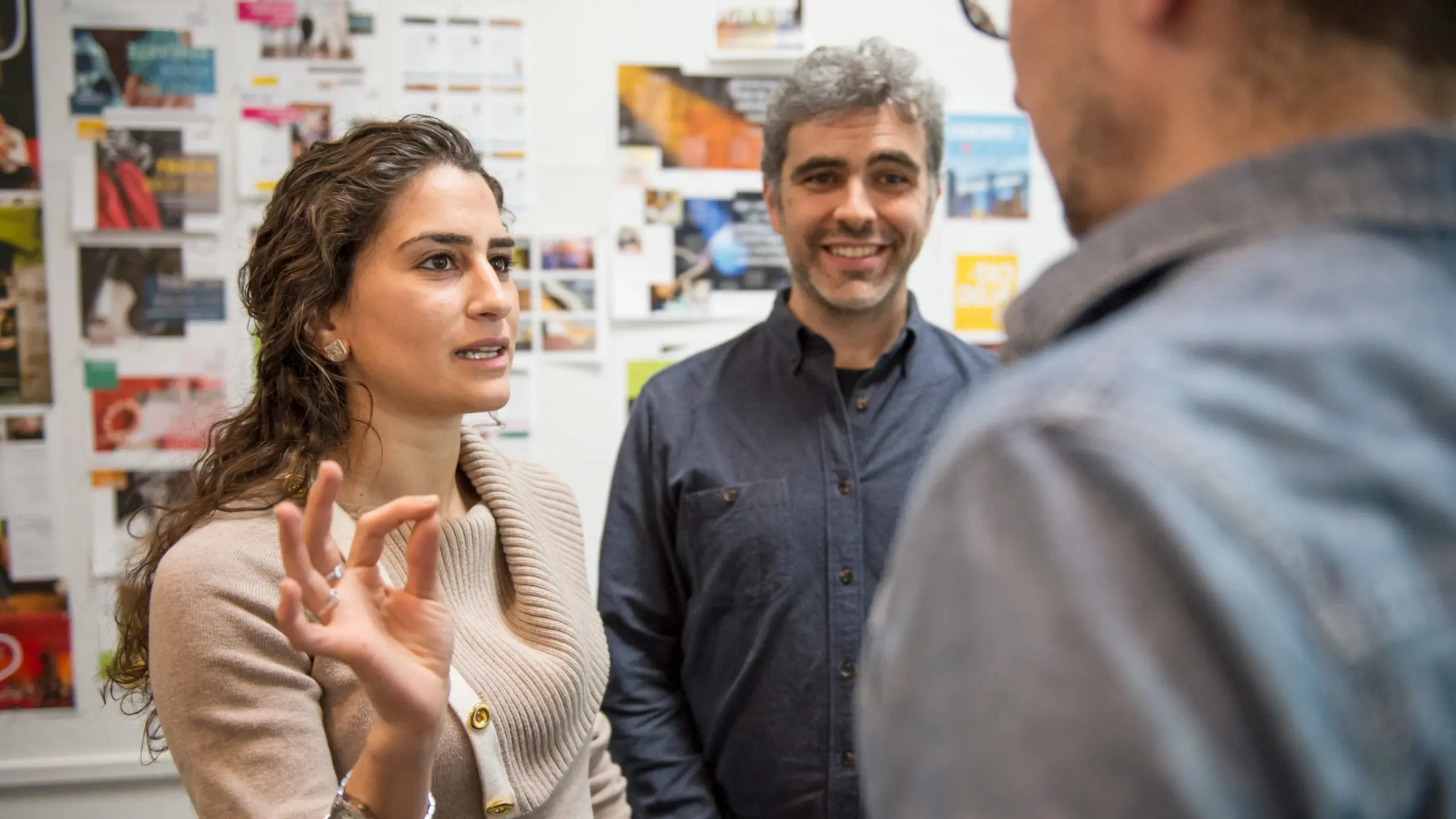Since we were founded in 1979, Sametz Blackstone has worked with organizations of different sizes and stripes to define their place in the landscape, attract new audiences, and deepen existing relationships. Our team helps build understanding of, and participation in, what our clients offer—and assists in achieving their tactical and strategic goals.
Approach
We are systems thinkers: whether we’re engaged in a large rebranding project, a comprehensive website, message realignment, a capital campaign, or a discrete brochure, our approach—integrated across disciplines, and scaled to each client’s needs, culture, and resources—yields solutions that are authentic and compelling.
We work with you to…
Get calibrated
Qualitative interviews, quantitative surveys, audits
Evolve your brand strategy
Attributes, audiences + what they care about, what you promise, brand relationships among your offerings
Express your brand verbally
Name, messaging framework, content development
Express your brand visually
Identifier / logo, approaches to type, color, imagery, gesture, composition
Develop engaging communications
Print, web, social, environmental
Own your brand assets
Knowledge transfer, documentation, training, workshops
1. Get calibrated
2. Evolve your brand strategy
3. Express your brand verbally
4. Express your brand visually
5. Develop engaging communications
6. Own your brand assets
History
Founded over four decades ago by Roger Sametz and two other graphic designers who attended Yale together, the team, which quickly grew, shared three core beliefs:
- that the precepts of what was then called “Swiss design”—economy of gesture, system thinking, organization as messaging, and the consideration of both literal and metaphoric imagery—communicated more effectively, and more beautifully, than other approaches;
- that design choices needed to be informed by strategy grounded in a deep understanding of business goals, desired audiences, what one wanted these people to think and do, and defining brand attributes and positioning. Otherwise, design directions, while perhaps visually pleasing, would not be authentic, proprietary, or as effective as they needed to be;
- that design decisions and solutions needed to be objectively presented and evaluated by clients based on the above—a thumbs up or down had to be driven by what would best achieve goals, not by purely subjective or aesthetic notions.
This grounding in economy, system thinking, programming, objective discussion—and a focus on achieving results for clients—enabled the firm, even in the early years, to collaborate with both large, international businesses and prestigious academic and cultural organizations.
While strategic counsel was baked in to how we approached all projects, the firm soon elevated strategy to be a specific offering—and added message development and writing, as well—to be able to offer more complete, one-stop-shopping solutions for a widening set of clients.
Well before “brand” became the ubiquitous, gotta-have-it concept it is today, the firm focused on building the brands of clients, moving beyond the notion that brands only attached to toothpaste, jeans, and cars—to building brand systems for academic, professional, financial, and cultural organizations. These systems were about much more than visual identity (or corporate identity, as it was then labeled): they were about what an organization meant, what it promised, what people could expect from an engagement—expressed through strategy, content, design, and, ultimately, behavior.
Concurrently, as fax machines and deliveries via taxis (or mail!) faded into the analog sunset, Sametz Blackstone was one of the first Boston firms to build an integrated web team. This group further fulfilled our ability to offer holistic solutions, to put knowledge gained through investigation and programming to best advantage, and to make it easier for clients to manage their brand and communication initiatives. And to ensure that clients’ communications would be integrated across print and digital platforms—and always reinforce one another—we trained, and subsequently hired, designers and writers who were fluent in both.
With our core beliefs intact, and with the capability to integrate brand-focused strategy, content, design, web, and fundraising to address new challenges in a changing world, the firm has continued to make a positive difference for a wide range of clients.
